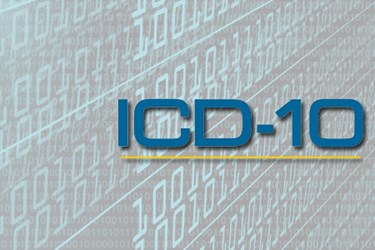ICD-10 — A VAR's Preparedness Kit
By Megan Williams, contributing writer

HHS has finally announced an ICD-10 implementation deadline of October 15, 2015. Your clients will want to take notice.
What It Is
ICD-10 is the second most recent version of the World Health Organization’s International Classification Of Diseases (ICD) coding system. It is used to monitor the incidence and prevalence of diseases and other health problems, as well as classify diseases by types. It helps facilitate the storage and retrieval of diagnostic information, and was introduced in May of 1990, being put into use starting in May of 1994.
The new code set differs in several material ways from its predecessor.
- The code set has been expanded from five to seven positions.
- As of the latest version, there are 68,000 existing codes, as opposed to the 13,000 in ICD-9.
- ICD-10 provides greater specificity that its predecessor — much more information can be conveyed in one code.
- The terminology used has been modernized and standardized.
- Some codes reflect both diagnoses and symptoms, meaning that in some cases, fewer codes are needed to describe a condition.
According to a press release from HHS, “The U.S. Department of Health and Human Services (HHS) issued a rule today finalizing Oct. 1, 2015 as the new compliance date for healthcare providers, health plans, and health care clearinghouses to transition to ICD-10, the tenth revision of the International Classification of Diseases. This deadline allows providers, insurance companies, and others in the healthcare industry time to ramp up their operations to ensure their systems and business processes are ready to go on Oct. 1, 2015.”
What Your Clients Will Need
ICD-10 will impact the entire continuum of healthcare — from traditional clinical entities, to behavioral health providers, insurance companies (health, home, and auto), self-insured employers, and more.
Your clients will need help navigating code mapping issues (there is still no clear mapping between ICD-9 and the much more complex, version 10), staffing in preparation for the implementation deadline, coordinating with CMS if they are interested in volunteering for end-to-end testing, and in properly updating technology they have that use the systems.
The importance for healthcare providers to update to the system can’t be stressed enough — this update is not like Meaningful Use where there are compliance penalties. If providers are not abiding by the proper coding guidelines, they risk simply not getting paid for their services.
Resources
Preparing Technology: The American Health Information Management Association has issued their take on industry reaction to ICD-10 and the “myths” around it. Available for AHIMA members here.
WHO Electronic ICD-10 Training Tool: This tool, designed for self-learning and classroom use in preparation for ICD-10, is available here.
Road To 10: This is CMS’s answer to small practices looking to navigate the transition to ICD-10. It includes a breakdown of needs by medical specialty, as well as a template library and an aid to build personalized action plans. Visit the website here.
Academic Input On Ambiguity: The study “Identifying Clinically Disruptive International Classification Of Diseases 10th Revision Clinical Modification Conversions to Mitigate Financial Costs Using an Online Tool”, attempts to quantify coding ambiguity in the conversion from version 9 to version 10 (specifically in hematology-oncology diagnoses), and is available from the Journal Of Oncology Practice here.
Non-covered Entities: A look at what ICD-10 means for entities that aren’t covered under HIPAA. Available here.
Going Deeper
Interested in more of what your clients want and need from you around ICD-10 preparedness? We recommend our article, “ICD-10 Delays, ICD-11, And What Clients Want From VARs.”
